The SlimSAS Conundrum
As mentioned before, this system includes 6 of what ASRock Rack simply calls “Slimline” connectors on their spec sheet. You can see them on their own stock photo of the motherboard:
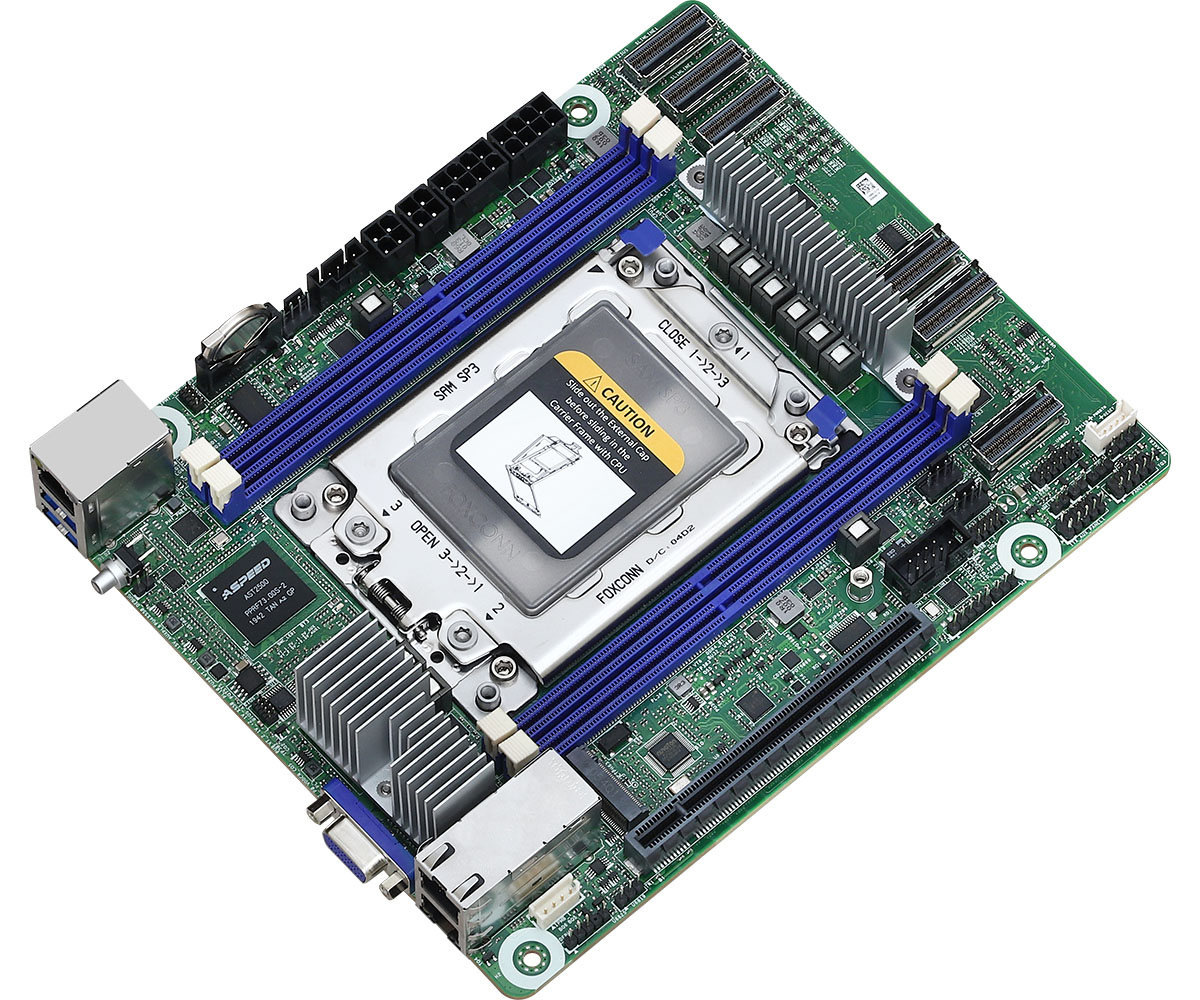
There is a problem though; our board does not look exactly like the one in the picture. Here is the relevant bit:
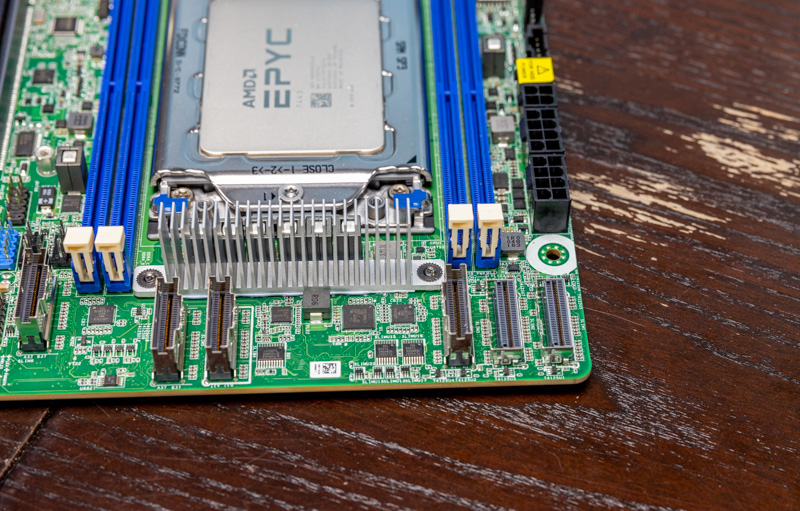
As you can see, the two right-most Slimline connectors (labeled as SLIM1 and SLIM2 in the manual) are physically a bit different than the other four Slimline connectors (SLIM3 through SLIM6). After using the board and trying to buy cables for it to use in our ICY DOCK MB872MP-B review, I came away incredibly frustrated and confused. All of the Slimline connectors are actually Slimline SAS 8i connectors or SFF-8654. However, SLIM1 and SLIM2 – the two shorter connectors – are the low profile variant of Slimline SAS 8i, which as far as I can tell is a pretty rare connector. Unfortunately, SLIM1 and SLIM2 are the only connectors that carry SATA on them. ASRock Rack does not make note of the specific connectors anywhere in their manual or specifications, referring to them exclusively as “Slimline” or “Slimline SAS”. On their own product photography, they apparently show all Slimline ports using the low-profile variant, despite shipping hardware differing from that.
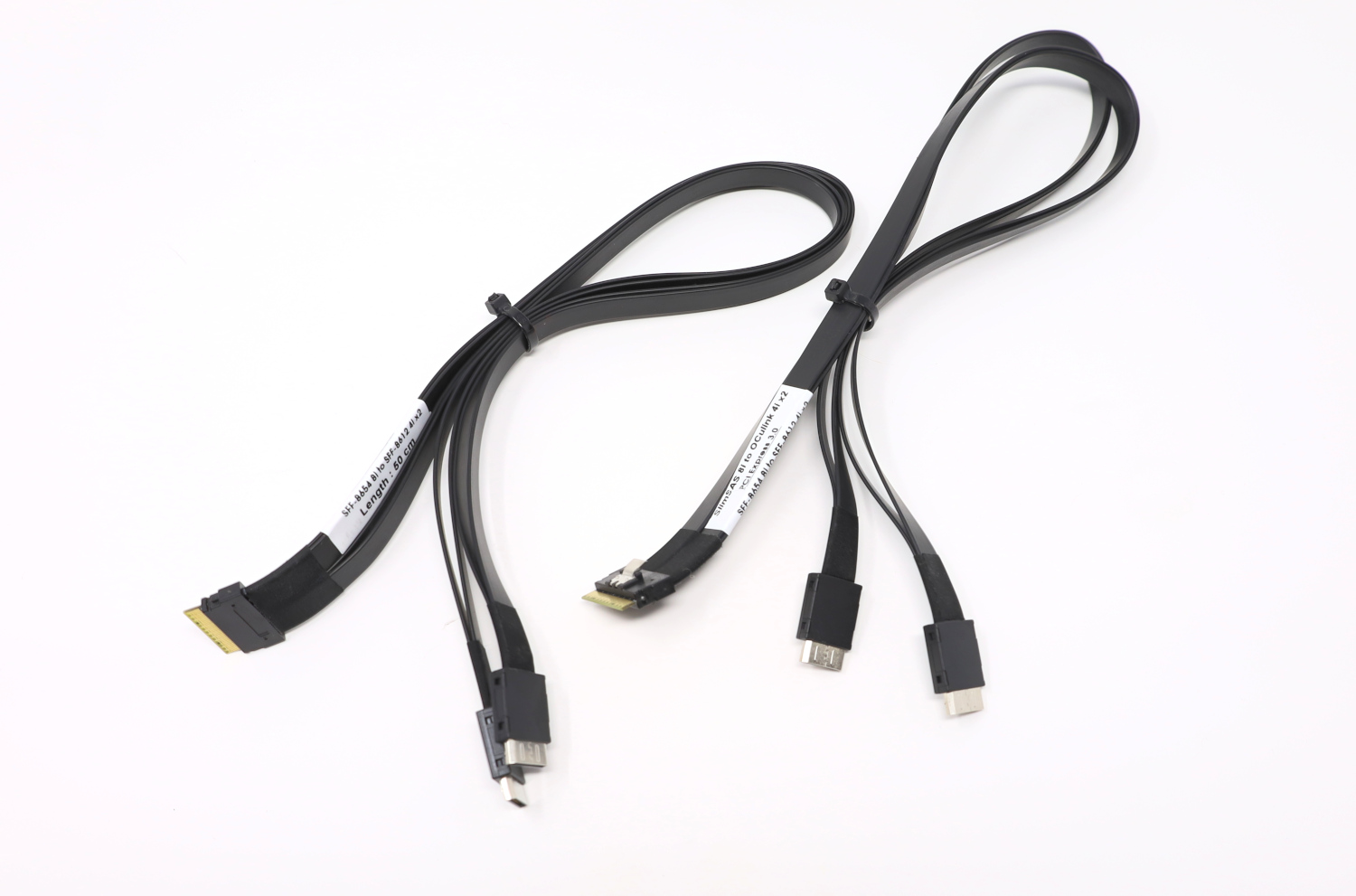
The cabling we bought for the ICY DOCK review was purchased before we understood all of this, and is not low-profile on the SFF-8654 end. Our cables would work electrically, but they had nothing to latch onto in the low-profile ports. As a result, if you jostled the system the cables would simply fall out.
While this would normally just be a case of buyer beware, I feel ASRock Rack’s lack of specifics of the ports on their board, the imagery, and indeed the choice of the low-profile connectors in the first place raise the issue to one worth mentioning. To the best of my searching ability, there are zero low-profile Slimline SAS cables available on Amazon or most all sites, and some of the few listings I did find for low-profile cables showed pictures of cables that very obviously were not actually low-profile. My point is this is needlessly confusing, and that the use of the low-profile connector is the cause. At a minimum, they need to notate the specific connectors in their documentation and update their product pictures to be accurate.
ASRock Rack ROMED4ID-2T Topology
With the EPYC processor functioning as a SoC and with so many PCIe lanes directly attached to the CPU, the block diagram is going to be pretty boring looking.
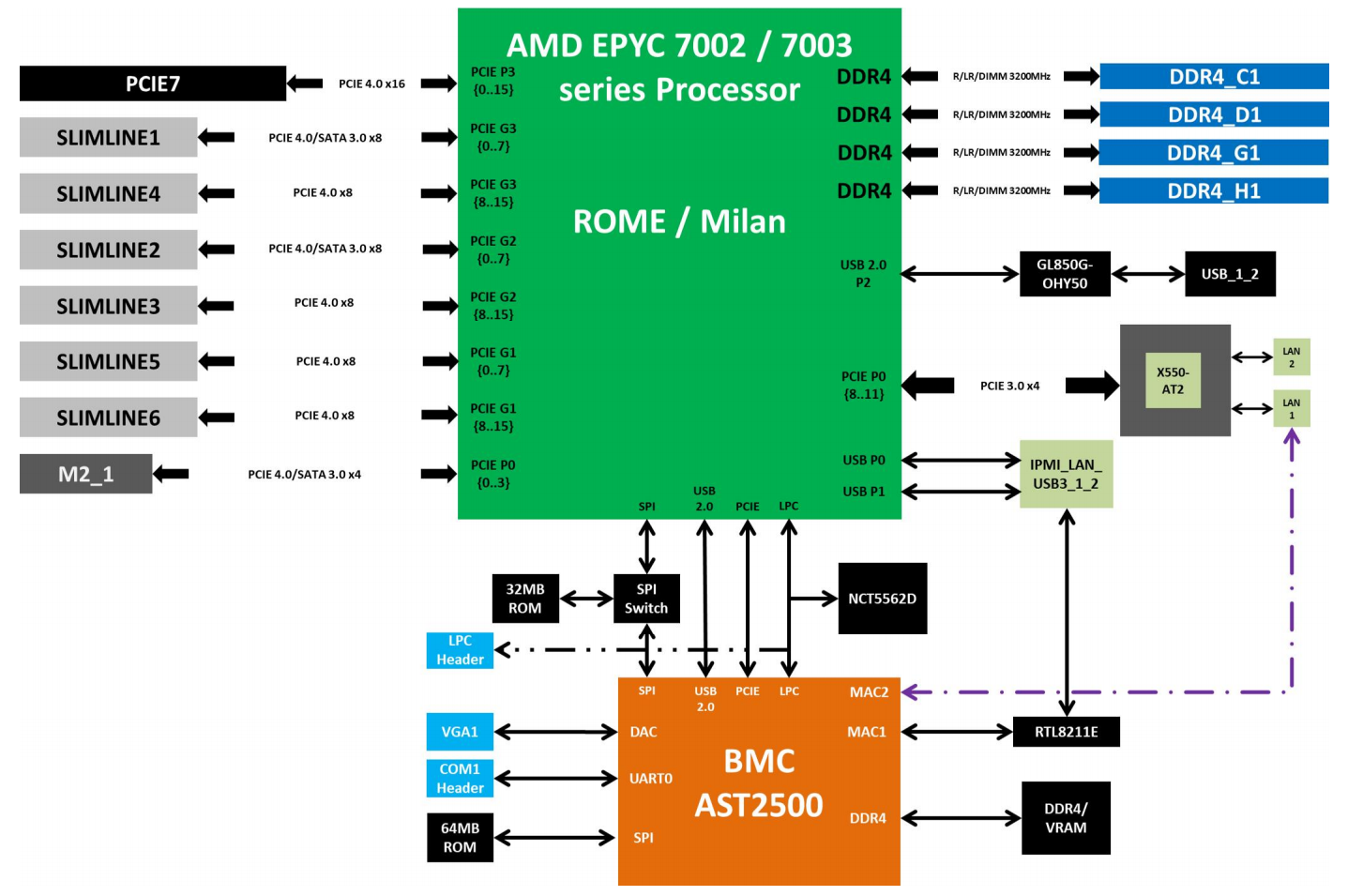
As expected, almost everything is directly attached to the CPU itself with zero muxing or oversubscribing of PCIe lanes. Even with all this connectivity the EPYC processors still have unused PCIe lanes on this motherboard, which is just unavoidable when operating in this form factor.
ASRock Rack ROMED4ID-2T Management
The out-of-band management is handled by the ASPEED AST2500. Full KVM support is included out of the box, along with the ability to perform BIOS and BMC upgrades from within the web GUI.
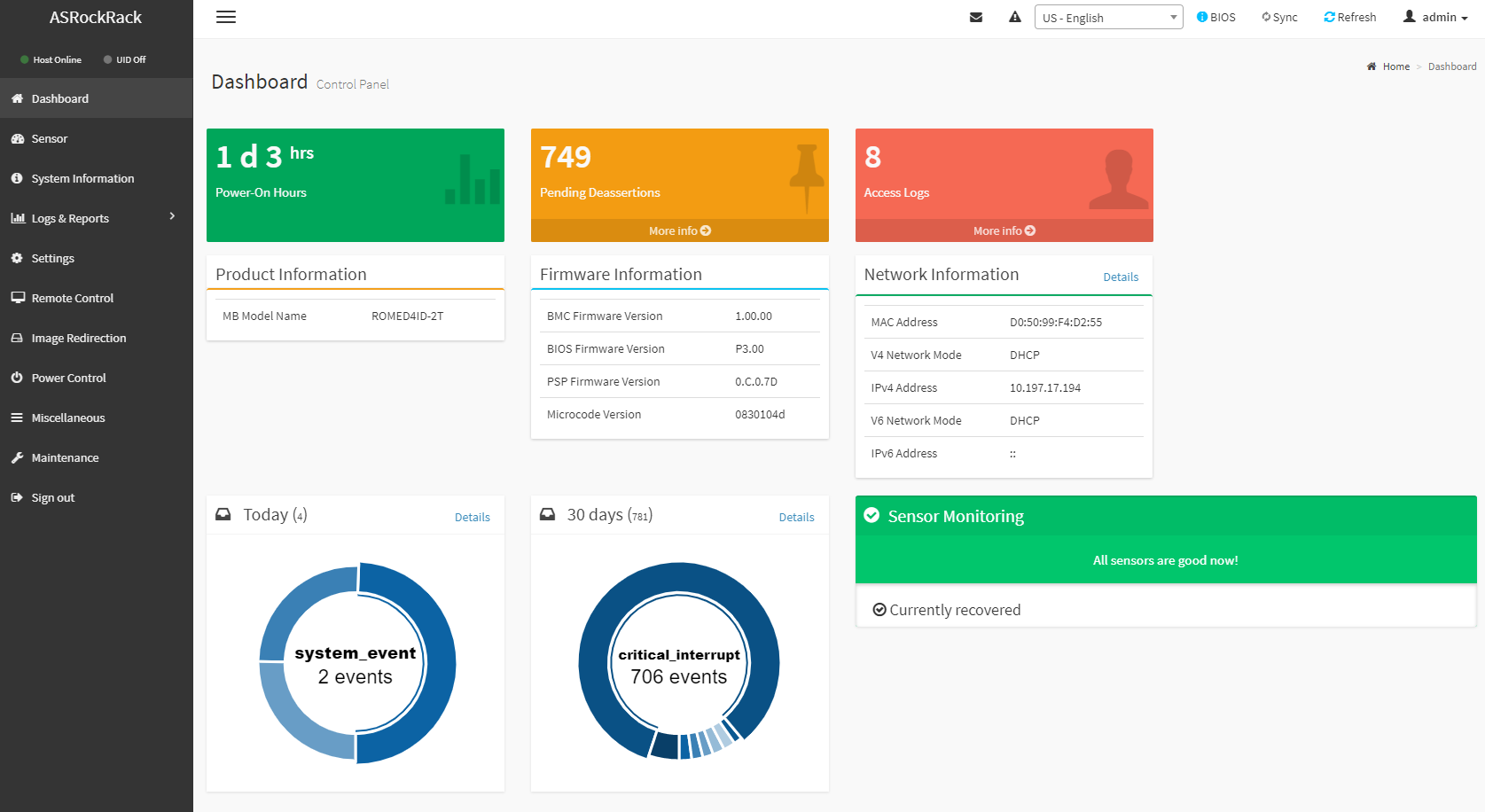
We have gone over the exact feature set of the ASRock Rack AST2500 BMC implementation in previous reviews like the X570D4U-2L2T and ROMED6U-2L2T. Everything written in those reviews applies here; we get full HTML5 iKVM including remote media, along with BIOS and BMC firmware updates.
In past reviews of ASRock Rack motherboards I have complained about slow remote media, and honestly I had hoped that was some kind of side effect of implementing the AST2500 on a Ryzen platform. Alas, the same problem remains on the ROMED4ID-2T; remote media mounted with either the HTML5 or Java iKVM client is exceptionally slow. To illustrate the issue, this time I have made the world’s most boring YouTube video that shows what you can expect to encounter when attempting to boot to an OS installation ISO mounted via remote media.
Even with my complaint about the remote media speed, overall this is a very high-quality BMC implementation and it works very well.

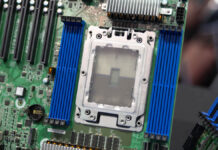
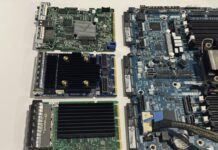
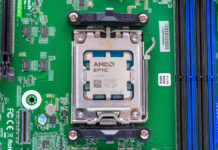
Hello,
Asus use the same BMC on this Server ASUS ESC4000A-E10 is also slow and buggy.
ASMB9-iKVM
ESC4000A-E10
Firmware Version: 2.03.1
Firmware Build Time: Mar 19 2021
BIOS MB Model: ESC4000A-E10
BIOS Version: 0101
BIOS Build Time: 03/18/2021
Imagine if we just drop PCIe slots outright in favour of slimline connectors. How much smaller GPUs could be, how much smaller AICs could be. How much smaller the machine could be. How much better that thermal management could be.
That said, the two low profile slimline connectors make no sense. They should be regular height.
“Or perhaps you simply need a large number of cores and a good amount of memory in a tiny package for any number of reasons.”
There is indeed the ongoing DAN C4-SFX case project, with a goal of using the ROMED4ID-2T in an SFF build. Might have been worth mentioning or even acquiring a preproduction sample for the STH review.
Hello!
Before Epyc Milan was released it was noted on the webpage of asrockrack.com that this board does 7001 and 7002 epycs. So I would expect that it still is able to run the 7001 Naples generation. Could you, please, test it, if you have the board still?
Thanks
Would this fit in a Silverstone DS380 case?
Does anyone know where to find a Slimline SAS 8i to dual U.2 cables?
Anyone know where you can order this motherboard? It has been out of stock for a while.
I found one SlimSAS 8i low profile cable, but both ends are the same…
https://www.amazon.com/dp/B08X63QMWK
I’m trying to used an Icy Dock ToughArmor MB699VP-B V1 with this board but Icy dock support is telling me it might not work due to incorrect pin out on the SlimSAS connector. I might need to upgrade to the V2 or V3 of the dock. At over $400 for the nvme docks that sucks.
Digging up the dead here. What cases/enclosures support this proprietary deep mitx board??
I’m using a A24 v5 with a deep mini itx board, in 5 litres volume.
The downside is that you’ll need to use a desktop 12V power supply, which don’t tend to go much higher than 300W. Quiet because fanless, but forget about running very high TDP CPUs or power hungry GPU.